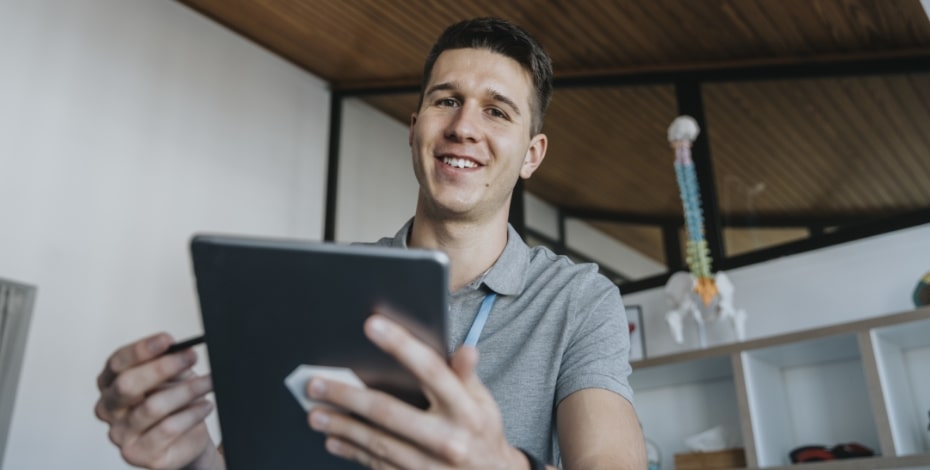
Near-peer led simulation for physiotherapy students

A group of physiotherapists in Melbourne recently conducted a mixed-methods study to investigate the student experience of near-peer-led simulation in physiotherapy education. Senior author Associate Professor Selina Parry answers some questions about the study and its findings.
How established is simulation as part of the clinical training of physiotherapy students?
Simulation is now commonly used within physiotherapy curricula in Australia. However, there are a variety of different simulation methods and purposes and the establishment of these practices vary.
Simulation was initially introduced as an alternative to clinical placement hours, to supplement or partly replace clinical placement time.
This is still critically important because the demand for clinical placement hours is growing along with the increasing number of physiotherapy programs.
However, in our study we were interested in simulation as a teaching and learning activity that acts as a precursor to clinical placements.
Instead of using paid actors to portray a patient, we used peers from senior year levels (other physiotherapy students) to act as the patients within the teaching activity.
Why did you decide to undertake this study?
Physiotherapy students in Australia are coming out of several years of disrupted study and remote learning due to the COVID-19 pandemic.
It is essential that we investigate the scholarship of teaching and learning to provide the most effective teaching modalities and prepare our students to be competent new graduate physiotherapists while maximising their experience in learning and peer connection.
We hypothesised that the peer-led model of simulation would benefit both the first- and second-year students.
We felt that the first-year students had much to gain in learning from their more experienced peers, while the second-year students would learn a lot as peer teachers providing feedback.
We wished to understand the student experience of this simulation model to inform the implementation in physiotherapy curriculum more broadly.
What roles did the first- and second-year students play in the study?
The first-year students took on the role of ‘near-peer learners’; they were the recipients of the teaching and learning activity, which
was offered within their core curriculum.
The first-year students simulated being a physiotherapist and they had three separate clinical encounters with ‘patients’ across a week.
The second-year students took on the role of ‘near-peer teachers’; they portrayed the patients and provided the first-years with feedback on their performance.
What themes arose from the student focus groups and did the quantitative data reinforce these themes or did it identify other issues?
We conducted focus groups with students in both roles to capture their experiences.
Quantitative data was generated from questionnaires administered before and after simulation as well as from direct observation of students’ interactions.

Selina Parry.
The quantitative data reinforced the themes from the qualitative data.
Overall we identified five themes:
• the near-peer-led simulation improved the students’ confidence and the opportunity to make mistakes in a supportive and safe environment was valued
• peer feedback was an integral part of the learning process and enriched the learning experience
• the authenticity and realism of the patient encounters created seriousness, promoted engagement and facilitated knowledge transfer to clinical performance (as perceived by students)
• there were benefits for both peer learners and peer teachers
• the anticipation and emotional impact of the simulation experience were evident in both groups.
Near-peer-led simulation was viewed by students as a valuable and engaging activity.
It is a component of entry-to-practice physiotherapy education that should be considered for widespread use within physiotherapy curricula.
Where do you think research in this topic area needs to go next?
There are several important next steps. Our study did not investigate the effect of near-peer-led simulation on future clinical performance.
First-year students perceived that simulation used as a teaching and learning activity promoted good knowledge transfer but it was beyond the scope of our study to test whether this was the case or not.
Our students are postgraduates so they come into the physiotherapy course with prior experience of university studies and a level of maturity.
We implemented it at the end of first and second year respectively within the three-year degree.
Whether this is the ideal time, and whether it will translate to improved clinical performance on placement in year two, are important questions.
>> Selina Parry FACP is an Associate Professor in Physiotherapy at the University of Melbourne. She is a Fellow by Original Contribution of the Australian College of Physiotherapists.
© Copyright 2024 by Australian Physiotherapy Association. All rights reserved.





